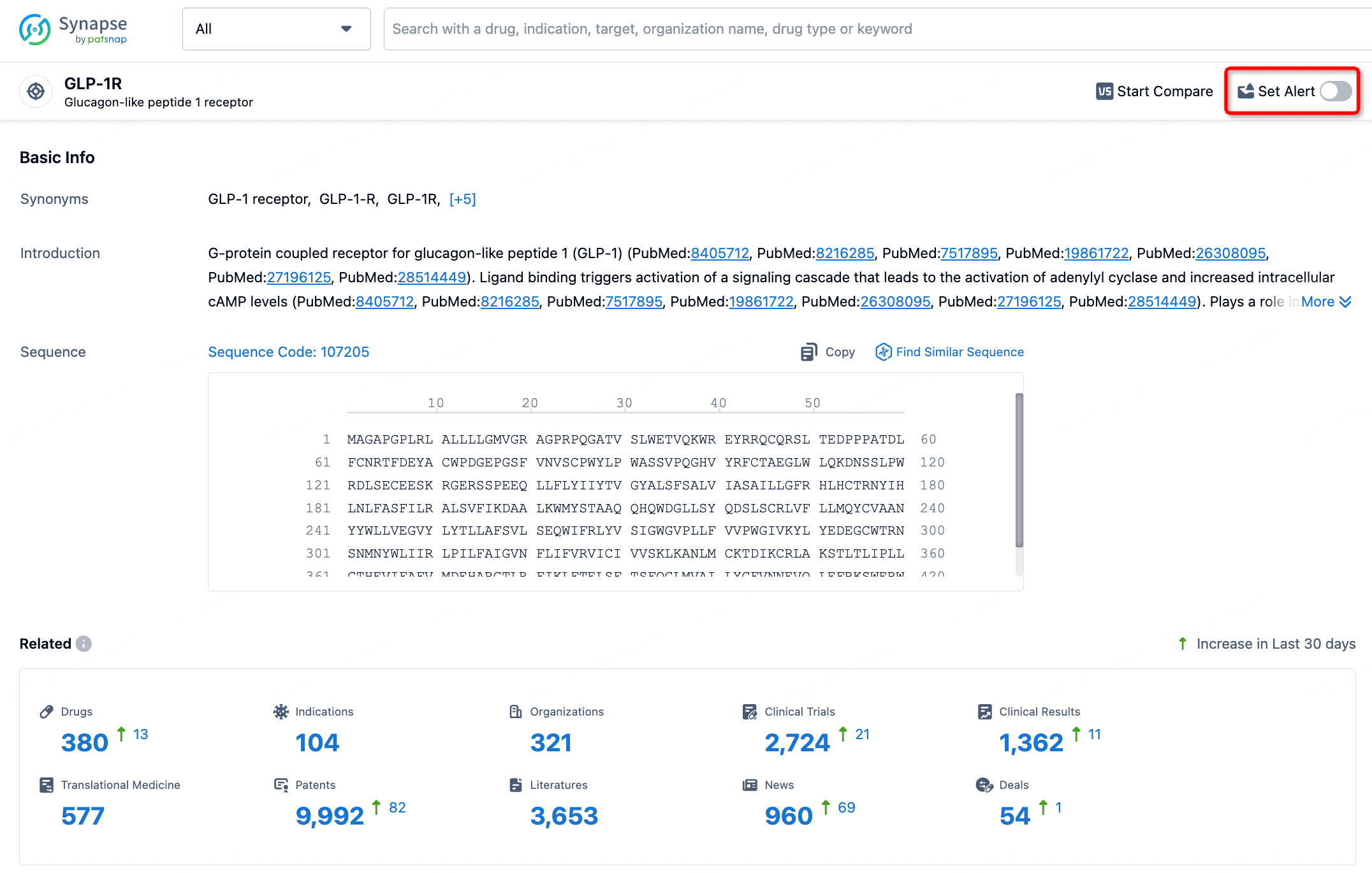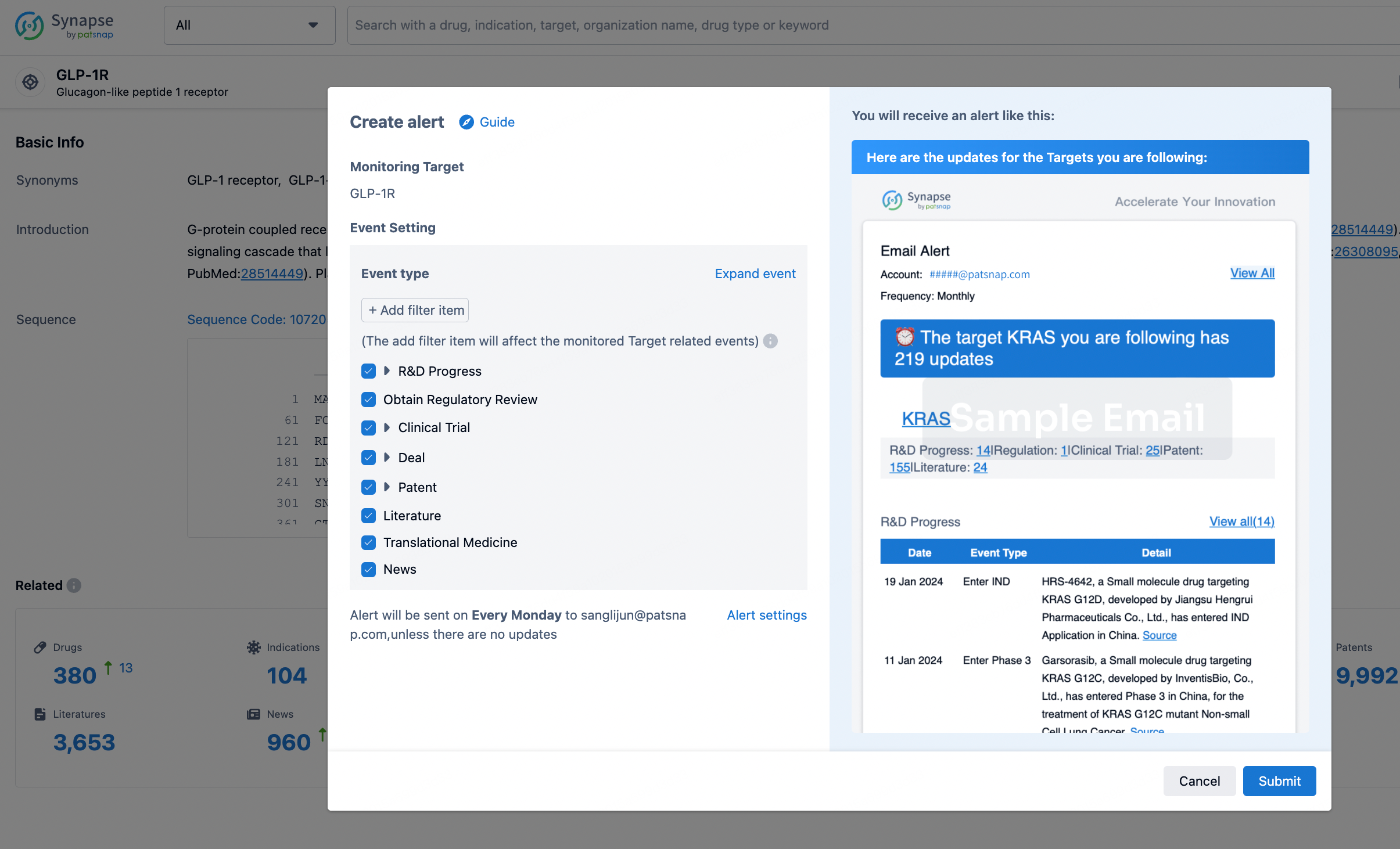Request Demo
What are ERα antagonists and how do they work?
21 June 2024
Estrogen receptor alpha (ERα) antagonists have emerged as significant players in the field of medical science, particularly in the treatment and management of hormone-related conditions. These compounds are designed to inhibit the action of estrogen, a hormone that plays a crucial role in various physiological processes, including reproductive functions and bone density regulation. ERα antagonists have shown immense potential in treating conditions such as breast cancer, highlighting their importance in modern medicine.
ERα antagonists function by targeting the estrogen receptor alpha, one of the two main types of estrogen receptors. Estrogen receptors are proteins found inside cells, specifically in tissues sensitive to estrogen, such as the breast, uterus, and bones. These receptors act as binding sites for estrogen, allowing the hormone to exert its effects on the cell. When estrogen binds to ERα, it activates the receptor, leading to various cellular responses, including cell growth and proliferation. This mechanism is particularly significant in breast tissue, where estrogen can promote the growth of cancerous cells.
The mode of action of ERα antagonists involves binding to the estrogen receptor alpha, preventing estrogen itself from binding and activating the receptor. By occupying the receptor, these antagonists block the hormone's ability to stimulate cell growth and proliferation. This blockade is crucial in tissues where estrogen-driven proliferation is problematic, such as in certain types of breast cancer. ERα antagonists can also induce a conformational change in the receptor, rendering it inactive and unable to initiate estrogen-mediated signaling pathways.
ERα antagonists are not merely about blocking estrogen's effects; they also play a role in modifying the receptor's activity. Some antagonists can recruit co-repressors to the receptor, further inhibiting its activity. This dual mechanism of action – blocking estrogen binding and recruiting inhibitory proteins – makes ERα antagonists highly effective in reducing estrogen-driven cellular proliferation. Additionally, certain ERα antagonists can degrade the receptor, decreasing the overall number of receptors available for estrogen binding, thereby diminishing the cellular response to the hormone.
The primary use of ERα antagonists is in the treatment of hormone receptor-positive breast cancer. Approximately 70% of breast cancers express estrogen receptors, making them susceptible to estrogen-driven growth. By using ERα antagonists, healthcare providers can effectively slow down or halt the progression of these cancers. Drugs such as tamoxifen, one of the most well-known ERα antagonists, have become a cornerstone in breast cancer therapy, particularly in premenopausal women. These drugs are often used as adjuvant therapy, meaning they are administered after primary treatments like surgery to reduce the risk of cancer recurrence.
Beyond breast cancer, ERα antagonists have shown potential in treating other conditions influenced by estrogen. For instance, they are being explored as therapeutic options for endometriosis, a condition characterized by the growth of endometrial tissue outside the uterus, which is driven by estrogen. By inhibiting the action of estrogen in these tissues, ERα antagonists can help alleviate the symptoms of endometriosis, such as pain and infertility.
Moreover, ERα antagonists are being investigated for their potential in treating osteoporosis. Estrogen plays a vital role in maintaining bone density, and its decline during menopause can lead to weakened bones and increased fracture risk. By modulating the activity of estrogen receptors in bone tissue, ERα antagonists may help prevent bone loss and promote bone health in postmenopausal women.
In conclusion, ERα antagonists are powerful tools in the fight against hormone-related conditions, particularly estrogen receptor-positive breast cancer. Their ability to block estrogen's effects and modulate receptor activity makes them highly effective in reducing estrogen-driven cellular proliferation. As research continues, the potential applications of ERα antagonists are expanding, offering hope for improved treatments for a variety of estrogen-related conditions. Understanding the mechanisms and uses of these antagonists is crucial for advancing medical science and improving patient outcomes.
ERα antagonists function by targeting the estrogen receptor alpha, one of the two main types of estrogen receptors. Estrogen receptors are proteins found inside cells, specifically in tissues sensitive to estrogen, such as the breast, uterus, and bones. These receptors act as binding sites for estrogen, allowing the hormone to exert its effects on the cell. When estrogen binds to ERα, it activates the receptor, leading to various cellular responses, including cell growth and proliferation. This mechanism is particularly significant in breast tissue, where estrogen can promote the growth of cancerous cells.
The mode of action of ERα antagonists involves binding to the estrogen receptor alpha, preventing estrogen itself from binding and activating the receptor. By occupying the receptor, these antagonists block the hormone's ability to stimulate cell growth and proliferation. This blockade is crucial in tissues where estrogen-driven proliferation is problematic, such as in certain types of breast cancer. ERα antagonists can also induce a conformational change in the receptor, rendering it inactive and unable to initiate estrogen-mediated signaling pathways.
ERα antagonists are not merely about blocking estrogen's effects; they also play a role in modifying the receptor's activity. Some antagonists can recruit co-repressors to the receptor, further inhibiting its activity. This dual mechanism of action – blocking estrogen binding and recruiting inhibitory proteins – makes ERα antagonists highly effective in reducing estrogen-driven cellular proliferation. Additionally, certain ERα antagonists can degrade the receptor, decreasing the overall number of receptors available for estrogen binding, thereby diminishing the cellular response to the hormone.
The primary use of ERα antagonists is in the treatment of hormone receptor-positive breast cancer. Approximately 70% of breast cancers express estrogen receptors, making them susceptible to estrogen-driven growth. By using ERα antagonists, healthcare providers can effectively slow down or halt the progression of these cancers. Drugs such as tamoxifen, one of the most well-known ERα antagonists, have become a cornerstone in breast cancer therapy, particularly in premenopausal women. These drugs are often used as adjuvant therapy, meaning they are administered after primary treatments like surgery to reduce the risk of cancer recurrence.
Beyond breast cancer, ERα antagonists have shown potential in treating other conditions influenced by estrogen. For instance, they are being explored as therapeutic options for endometriosis, a condition characterized by the growth of endometrial tissue outside the uterus, which is driven by estrogen. By inhibiting the action of estrogen in these tissues, ERα antagonists can help alleviate the symptoms of endometriosis, such as pain and infertility.
Moreover, ERα antagonists are being investigated for their potential in treating osteoporosis. Estrogen plays a vital role in maintaining bone density, and its decline during menopause can lead to weakened bones and increased fracture risk. By modulating the activity of estrogen receptors in bone tissue, ERα antagonists may help prevent bone loss and promote bone health in postmenopausal women.
In conclusion, ERα antagonists are powerful tools in the fight against hormone-related conditions, particularly estrogen receptor-positive breast cancer. Their ability to block estrogen's effects and modulate receptor activity makes them highly effective in reducing estrogen-driven cellular proliferation. As research continues, the potential applications of ERα antagonists are expanding, offering hope for improved treatments for a variety of estrogen-related conditions. Understanding the mechanisms and uses of these antagonists is crucial for advancing medical science and improving patient outcomes.
How to obtain the latest development progress of all targets?
In the Synapse database, you can stay updated on the latest research and development advances of all targets. This service is accessible anytime and anywhere, with updates available daily or weekly. Use the "Set Alert" function to stay informed. Click on the image below to embark on a brand new journey of drug discovery!
AI Agents Built for Biopharma Breakthroughs
Accelerate discovery. Empower decisions. Transform outcomes.
Get started for free today!
Accelerate Strategic R&D decision making with Synapse, PatSnap’s AI-powered Connected Innovation Intelligence Platform Built for Life Sciences Professionals.
Start your data trial now!
Synapse data is also accessible to external entities via APIs or data packages. Empower better decisions with the latest in pharmaceutical intelligence.


